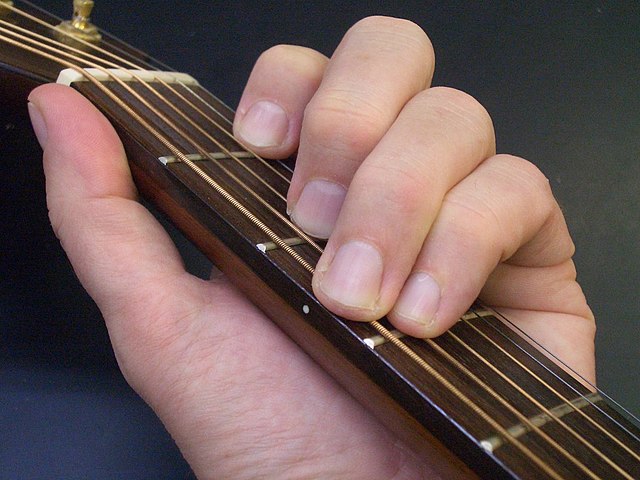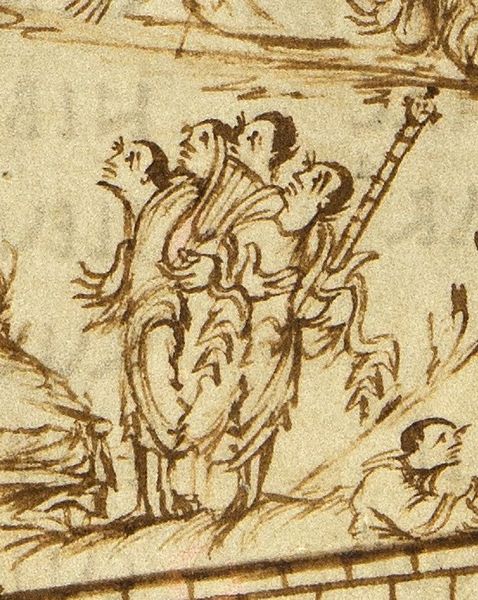The fingerboard is an important component of most stringed instruments. It is a thin, long strip of material, usually wood, that is laminated to the front of the neck of an instrument. The strings run over the fingerboard, between the nut and bridge. To play the instrument, a musician presses strings down to the fingerboard to change the vibrating length, changing the pitch. This is called stopping the strings. Depending on the instrument and the style of music, the musician may pluck, strum or bow one or more strings with the hand that is not fretting the notes. On some instruments, notes can be sounded by the fretting hand alone, such as with hammer ons, an electric guitar technique.
Six strings bass guitar fingerboard
Scalloped fingerboard of Yngwie Malmsteen's Stratocaster
A fret is any of the thin strips of material, usually metal wire, inserted laterally at specific positions along the neck or fretboard of a stringed instrument. Frets usually extend across the full width of the neck. On some historical instruments and non-European instruments, frets are made of pieces of string tied around the neck.
The neck of a guitar showing the nut (in the background, coloured white) and first four frets
Frets tied on to the neck of a saz; note microtonal frets between semitones.
China. Pipa with frets, Middle Tang Dynasty era (618–907 A.D.), from the Yulin Caves, cave 15
France, Utrecht Psalter, c. 850. During the Carolingian Renaissance an Anglo Saxon artist drew an image of a cythara with frets.






